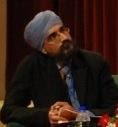Budget 2014’s reference and allocation to socially responsible investment (SRI) sukuk and environmental, social and governance (ESG) index are indeed welcomed and forward-looking developments.
ESG INDEX
The proposed ESG index is the (equity) flip side of the (fixed income) SRI sukuk, ie responsible citizenship. To build bridges to different communities, geographies and ways of investing/financing, there must be dialogue of aligned interests based upon common values.
It all sounds good on paper, but the challenge is actually establishing the blueprint, execution, and acceptance, ie funds with assets under management, otherwise it’s a good academic exercise.
There is precedence for an ESG index from the Muslim world. For example, in 2011 the Standard & Poor's (S&P)/Hawkamah ESG Pan Arab Index was launched.
S&P stated: “It is now widely recognised that ESG issues can have long-term consequences for financial performance, and linking stock market performance to ESG is perhaps the most effective way to highlight the concept of ESG…” For the first time, the ESG performance of companies in the MENA (the Middle East and North Africa) region has been extensively researched, quantified and translated into a series of scores that will be used as the basis for an index that will help raise awareness of a company’s impact on people, planet and profit...”
It has a vigorous and transparent screening methodology for inclusion, and has companies from 11 Arab countries: Bahrain, Egypt, Jordan, Lebanon, Kuwait, Morocco, Oman, Qatar, Saudi Arabia, Tunisia and the United Arab Emirates.
Thus, for a region with a disproportionate contribution to carbon emissions, the index was a welcomed first step in realising and highlighting responsible companies.
A Malaysian ESG index, while extremely important, may encounter the challenge of having enough constituents companies and the liquidity of these companies.
Furthermore, it may encounter the same challenges of the MY-ETF, the first Islamic ETF in Asia launched in 2008, where the Malaysia- only exposure did not allow it to get the expected investors from the Gulf countries.
Nevertheless, it could still be attractive proposition, if:
• Underlying screening methodology is transparent;
• Market performance, via back testing, to the national index and Islamic index;
• There is seed money;
• Investment vehicle is an exchange traded fund (ETF) on Bursa Malaysia or a low-cost index fund.
Thus, an ESG index is about awareness, education and aligning investing to values. It is a good and necessary step in building responsible capital markets.
It could also draw global patient investors to Malaysia, where their names may be more important than their money!
CONCLUSION
To build bridges, one must have a solid footing and foundation, otherwise the sustainability and scalability of the offering will slowly sink.
The announcement of a SRI Sukuk and ESG index is actually building a suspension bridge with expanding two-way lanes.
A good example of Malaysia leading Organisation of Islamic Cooperation on responsible capital market development.
[Rushdi Siddiqui, former global director at Dow Jones Indexes and global head at Thomson Reuters in Islamic finance, is now president/ED of a (halal) US-based agro-food company.]
THE MALAYSIAN RESERVE, 30 October 2013

